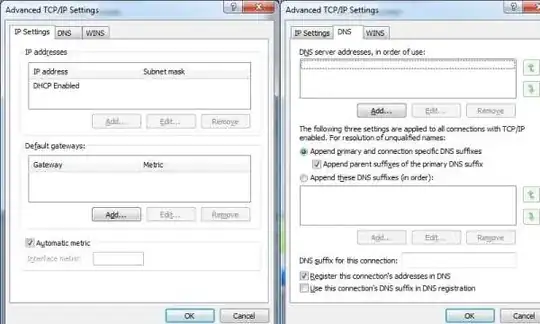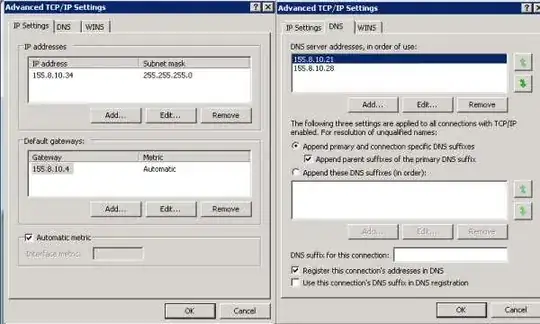I have two servers both running Windows 2008 with IPV4 and IPV6 both running.
If on server1 I ping server2 like this
ping server2
The response I get is
Pinging server2 [2002:9b08:a21::9b08:a21]
However if I ping server2 from my local machine (Windows 7 with both IPV4 and IPV6 running) I get
Pinging server2 [155.8.10.33]
The TCP/IP properties for IPV6 are identical on the server and on my local machine. However there are some differences in the properties from IPV4.
LocalMachine IPV4 Properties :

Server IPV4 Properties :

The only other difference I can see is that in ipconfig on the server "connection-specific DNS suffix" is blank where as on the local machine its set to the domain.